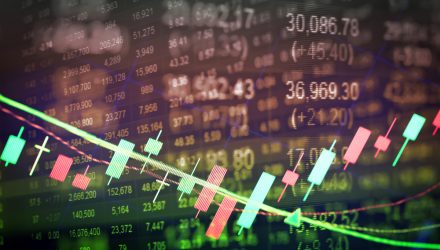Based on a forecast by Longview Economics, the price action in high yield debt could ultimately determine whether the bottom was already reached at the hands of the coronavirus pandemic. In particular, Longview is looking at the credit spreads—the difference in yield between safe haven Treasury notes and more risky corporate bonds.
“On this occasion, credit spreads are not confirming the end of the bear market. Over the last 6 – 7 weeks, the S&P 500 has rallied 34% from its intraday lows. Credit spreads, though, are little changed (tightening from 19.4pp (percentage points) to 17.6pp),” a note from Longview Economics said. “That type of muted price action in credit is normal during equity market relief rallies within a bear market.”
Investors looking to add high yield bond exposure to their ETF portfolios can look at the iShares iBoxx $ High Yield Corporate Bond ETF (HYG) and the SPDR Bloomberg Barclays High Yield Bond ETF (JNK). Some market experts question whether this move is nothing more than a small bandage on a gunshot wound.
Investors contemplating a high yield option can take a look at the Goldman Sachs Access High Yield Corporate Bond ETF (GHYB). GHYB seeks to provide investment results that closely correspond, before fees and expenses, to the performance of the FTSE Goldman Sachs High Yield Corporate Bond Index.
The fund seeks to achieve its investment objective by investing at least 80% of its assets (exclusive of collateral held from securities lending) in securities included in its underlying index. The index is a rules-based index that is designed to measure the performance of high yield corporate bonds denominated in U.S. dollars that meet certain liquidity and fundamental screening criteria.
Investors wanting an active option can look at the PGIM Active High Yield Bond ETF (PHYL). PHYL seeks total return, through a combination of current income and capital appreciation.
Under normal market conditions, the fund invests at least 80% of its investable assets in a diversified portfolio of high yield bonds that are below investment grade and other investments (including derivatives) with similar economic characteristics. It may invest in securities which are the subject of bankruptcy proceedings or otherwise in default as to the repayment of principal and/or interest at the time of acquisition by the fund or are rated in the lower rating categories or, if unrated, are in the judgment of the Subadviser of equivalent quality.
For more market trends, visit ETF Trends.








